How to Choose the Right Website Design Company in Bangalore for Your Brand

In today’s digital-first world, a professionally designed website is more than just a virtual storefront—it’s a cornerstone of your brand’s online presence. With Bangalore’s bustling tech ecosystem, the city is home to numerous website design companies that cater to businesses of all sizes. However, finding the right one for your brand can be a daunting task. Here are actionable tips to help you make an informed decision. Before diving into your search, take a moment to outline what you need from a website design company. Are you looking for a simple, informational site, an e-commerce platform, or a complex web application? Define your goals, target audience, and desired features. PlutoWebs always finds the right point for their clients and always chooses the following considerations. Key Considerations: What functionalities does your website need? What is your budget? What timeline are you working with? Begin by researching website design companies in Bangalore. Use search engines, local directories, and professional networks to create a list of potential agencies. Where to Look: Google searches (e.g., “Best website design companies in Bangalore”) Portfolios on platforms like Behance or Dribbble Reviews on Clutch, Google My Business, or Trustpilot A company’s portfolio speaks volumes about its capabilities. Look for projects similar to your requirements and assess their quality, creativity, and functionality. What to Check: User-friendly navigation and responsive design Aesthetics that align with your brand Successful implementation of client-specific features Client feedback provides insights into a company’s professionalism, communication skills, and ability to meet deadlines. Reach out to past clients if possible to get an unbiased perspective. Tip: Avoid companies with consistently poor reviews or lack of reviews altogether. Ensure the company is proficient in the latest technologies and design trends. They should also be well-versed in creating responsive designs optimized for all devices. Key Technologies to Look For: Front-end: HTML5, CSS3, JavaScript Back-end: PHP, Python, Node.js CMS Platforms: WordPress, Shopify, Drupal SEO and performance optimization techniques A visually appealing website is only half the battle won. Your website also needs to rank well on search engines. Choose a company that integrates SEO best practices into the design process. SEO Essentials: Fast loading speeds Mobile-friendly design Proper metadata and URL structures Cost is a crucial factor when choosing a website design company. Request detailed quotes and compare them against the scope of services offered. Questions to Ask: Are there any hidden fees? What is the payment schedule? Do they offer post-launch support? Strong communication ensures your vision is accurately translated into a functional website. Assess how responsive and transparent the company is during initial interactions. Post-launch Support:A good design company should offer ongoing maintenance, updates, and troubleshooting services. Bangalore-based companies have the advantage of understanding the local market. They can provide insights into regional user behavior and tailor your website accordingly. Time is money in business. Discuss the timeline for project completion to ensure it aligns with your goals. Questions to Clarify: How long will the design and development take? What happens if deadlines are missed? Conclusion Choosing the right website design company like PlutoWebs in Bangalore is a critical decision that can significantly impact your brand’s success. By understanding your requirements, researching thoroughly, and evaluating potential companies based on their portfolio, technical expertise, and communication skills, you can make a well-informed choice. Remember, the right partner will not just deliver a website but will create a platform that drives your business forward.
The Role of a Website Development Company in Bangalore in Scaling Your Business

In this article you will get to know what an important role a website development company in Bangalore plays to scale up your business
Myths Regarding the Creation of Custom Website Development
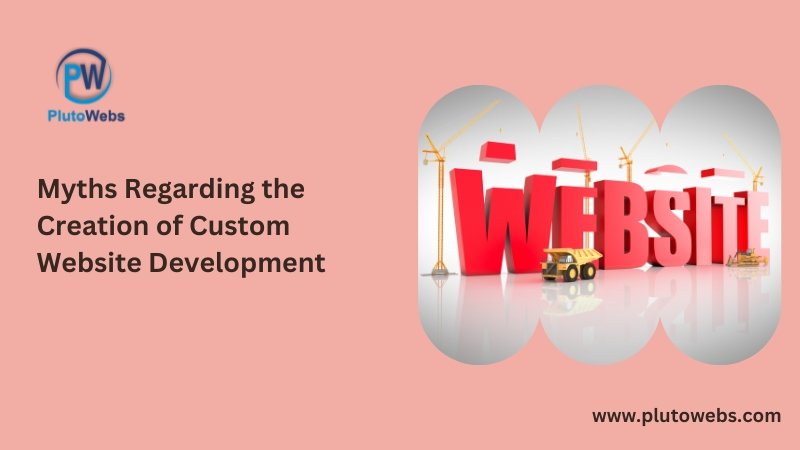
Your business needs a top-notch website that performs well. You might need to work with a web development company to do this. But how can you be certain that the demands you make and the terms you negotiate will be exactly what you want and, more significantly, what you actually get? So, an excellent place to start would be to educate yourself on the most prevalent myths surrounding web development. Quality web development is a multi-step, intricate process. Every modern business needs a well-designed website since it guarantees excellent functioning, easy navigation, and a strong online presence for your brand. As a result, there are many misconceptions about what you need and don’t need while looking for a freelancer or an agency to build your website. Others can cost you a lot of time, money, and occasionally even clients, while some of these are rather harmless. In order to help you meet the needs of your business website, we’ll discuss some frequent misconceptions about web creation in this post. You can Affordably Purchase a Good Website In other words, quality and price go hand in hand since you get what you pay for. A website is essential for any effective business plan, regardless of whether you are the proud owner of a small to medium enterprise (SME) or you want to build your own brand. Today, there are generally three options for building a website: hiring a freelancer, working with a web development company, or taking on the task yourself. The one you choose will rely on your business needs, goals, and budget because all three require different resources and costs. For instance, even if it might not be the most economical alternative, employing a web development business to manage your project would be preferable if you are an SME with advanced website needs. Of course, it may be simple to locate a freelancer who can build a site for you for half the cost or less, but the caliber of the finished product is probably going to let you down. A clean, responsive design with well-organized information that loads quickly and is simple to access on any device will be delivered by skilled developers and designers. This will not only create a fantastic user experience to assist visitors to get to know your company better, but it will also enable you to highlight the distinctive solutions you provide. After the website goes live, no changes are necessary. Factual statement: Building a website is only half the battle; ongoing optimization is required to keep it running well. Your website’s launch is just the beginning. Many individuals believe that creating a website is a one-time endeavour. In actuality, though, it’s a process that requires constant updates and refinement. Your website serves as a digital reflection of your company, therefore it only makes sense that it expands along with your business. A website is made up of several different parts, and each one needs ongoing attention and upkeep. You should frequently go back to the following fundamental building blocks: Web Hosting Content Management System (CMS) Domain Name Quality Assurance High-Quality Content On-Page SEO Privacy and Security Terms The digital environment is always evolving. Daily new trends and technologies arise, therefore you must devote the time and money necessary to update your website as needed to keep it current. Once your website is up, it’s critical to regularly check its analytics and make sure any necessary reworks are carried out without delay. If done correctly, this will not only enhance user experience but also guarantee your pages’ placement in search results. You’ll have a better chance of engaging and retaining your target audience as a consequence. A Stylish Design Is Required Design is important, but it won’t go nearly far enough if the user experience isn’t enjoyable. Any website that offers a top-notch user experience must do so, and the design is crucial to this. Users are visual beings that evaluate websites based on their front page. Your website’s aesthetics have a direct impact on your conversion rates. So, leaving a good first impression is crucial. A well-designed website is uncluttered, sparse, and simple to look at. Its user-friendly layouts, pertinent content, and straightforward navigation may effectively satisfy the expectations of your audience. Conducting UX research is crucial if you want to fully comprehend what users want from your website. This will make it easier for you to understand how users interact with your sites and how to properly engage them. Additionally, while dealing with site designers and developers, take their suggestions into account even if they conflict with your own. The skilled experts can provide you with useful insight into how to improve things and can help you see and take into account aspects you might not have previously considered. Developing a high-quality website requires a large team. Fact: Skill and knowledge are more important than the number of individuals. There are many phases and a lot of work involved in web development. Having a large team is frequently necessary, and the size of the team can change based on the user requirements for your website and your budget. The following experts are essential to building a strong foundation for your website: Project Architect/Owner Project Manager UX/UI Designers Marketing and Content Specialist QA and Testing Specialists Front- and Back-End Developers You can be sure to get a website that can live up to your expectations and is worth the price by working with a web development business you can rely on at each stage of the process. Your Saviour is ready-made Website Templates or Themes. Although it is technically possible, this is not a recommended method. Anyone who wants to develop a website but has limited money, experience, or both should consider using templates, including bloggers, small enterprises, start-ups, and small-scale entrepreneurs. With pre-built solutions, all you have to do is create your copy and design an appealing, user-friendly website. But pre-made themes and layouts won’t give your site a distinctive
API Security Best Practices To Safeguard Sensitive Data
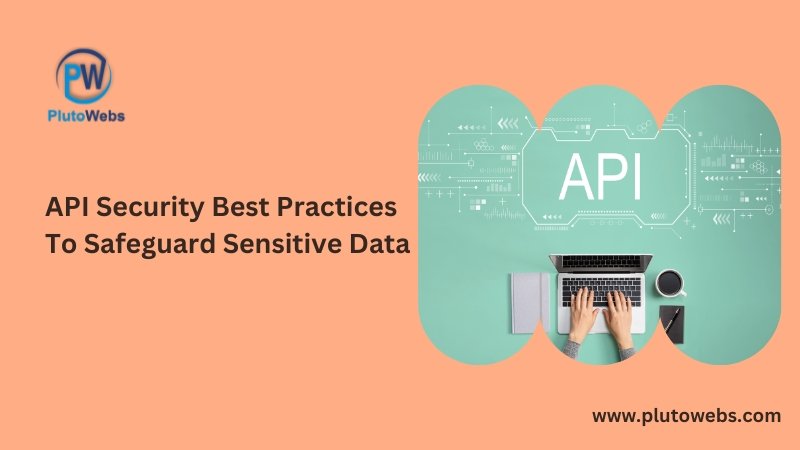
The use of APIs (Application Programming Interfaces) is now commonplace because more people are using various technological solutions. As a result, API security is a bigger problem than ever in creating apps. SaaS businesses typically have 350 integrations, compared to significant SaaS businesses like Slack, Zoom, and Shopify, which have over 2,000 connectors. Application Programming Interfaces (API) make life simpler, which is fantastic for developers and end users. However, there is a persistent worry about API security, particularly for open APIs that demand third-party logins. The pressure on developers to complete their work under arbitrary time constraints raises questions about quality standards. So how can businesses use the API ecosystem while ensuring that their data is protected from hackers? How? By utilising API security best practices. The top four security best practices will be discussed in this post as a way of protecting your APIs against malicious assaults. Describe API security API security is the process of defending APIs from risks and assaults. Today, every company and website has hundreds, if not thousands, of integrated APIs, many of which hold private or sensitive data, making it essential. The following procedures are put in place for effective API security protections; The queries that the API processes come from legitimate, reputable sources. All of the requests that are being handled are valid. Neither the answers nor any of the encryption can be broken. Your API implementations will probably use either SOAP (Simple Object Access Protocol) or REST (Representational State Transfer), two widely used web service access protocols, depending on your company and the type of data involved. Because SOAP is standardised, it doesn’t require HTTP and contains built-in error handling. REST is quicker, easier to learn, and doesn’t need expensive equipment. But by design, SOAP APIs are also more secure. To learn more about these two communication protocols, see this SOAP vs. REST comparison article. API Cyberattacks and their Types Because they typically include documentation about their structure and creation, APIs are vulnerable to attacks. In their efforts to acquire confidential data, hackers can use this to reverse engineer APIs. The most frequent assault types are listed below. The DDoS Attacks Distributed Denial-of-service (DoS) attacks are the most common kind. The attack is carried out on an API by overwhelming its memory through thousands of attacks, which result in the API slowing down and ultimately crashing the web server. Another way this happens is hackers send a vast amount of information in each request instead of thousands of requests. Stolen Authentication The quickest approach to gain access to user data might be through compromised authentication. Hackers gain access to the API by stealing a legitimate identity. The authentication token is typically taken and then used improperly. Cybercriminals will also get around poor authentication if the token isn’t used to obtain access. Man-in-the-Middle Attack A man-in-the-middle (MITM) attack takes place when a hacker is able to eavesdrop on the communication between the end user and the API. When neither one-way nor end-to-end encryption is in use, this typically occurs. Private data, such as login credentials, may frequently be taken as a result of these aggressive attacks. Best Practices of API Security After discussing the significance of API security and the kinds of cyberattacks to anticipate, let’s discuss some of the best practices for API security to safeguard your users. Use strong user authentication Lack of or subpar authentication is the main reason for API security breaches. Authentication provides evidence that someone is who they claim to be, much like having a company explain its LLC founding purpose precisely to demonstrate its authenticity. Your APIs must be secured because they are the gateway to a company’s database. Utilizing one-way, strong user authentication lowers the security risk associated with lost user authentications. Multi-factor authentication or, even better, a trusted authorisation method like OAuth is the best way to achieve strong user authentication. Either approach restricts access to online services to only authorised users. Encrypt Every Bit of Data, whether Online and Offline To defend against numerous assaults, the most frequent of which being MITM attacks, it is imperative to encrypt data. These occur when criminals gain access to private data, including login passwords, credit card numbers, account information, and other personal data, as previously mentioned. To prevent theft, data transmissions between API servers must always be properly secured. Statistics show that 33% of all Americans have experienced identity theft, with credit card fraud being the most frequent type. The Transport Layer Security (TLS) protocol, an improved version of the Secure Sockets Layer (SSL) protocol, should be used to encrypt all communications between businesses. While one-way encryption is an option, two-way encryption is significantly more effective and secure. Consider WhatsApp. The application ensures that every chat is end-to-end encrypted, demonstrating its high level of security. With this level of security, people will find WhatsApp appealing. Data encryption is therefore crucial, but it’s always good to have extra security. Utilizing credit protection services is another means of preventing ID theft. Services for credit protection assist you in keeping an eye on your financial activity and making sure no fraud takes place. These services will aid in repairing your credit score if it has been negatively impacted. Additionally, adding API Throttling and Rate Limiting can assist alleviate this issue. Hackers are very interested in APIs since they include a tonne of private data. Sadly, this also leaves APIs open to DDoS assaults. A good place to start in preventing successful API attacks is by putting rate limits in place. Decide at what point all requests will be declined. 8,000 requests per account per day, as an illustration. Use throttling in addition to threshold restrictions. Throttling algorithms carry out additional safety measures and verify the validity of APR requests. Additionally, consumers will still have access to the API and you’ll prevent breaches even though throttling would make a user’s connection slower, which is frustrating. With both in place, there is less likelihood that firm data will be compromised
How to Create a Website for Lead Generation for Your Business

It makes sense to optimise your website to create leads. But sadly, you can’t just put a “Click Here” button on your home page and wait for the leads to start coming in. Instead, strategists need to be used by marketers and designers. In this article, we’ll go over a few short strategies for lead generation website optimization. We must first develop a fundamental grasp of the lead generation process before we can comprehend how to optimise our website. What factors come into play when a website visitor converts to a lead? When a website visitor clicks on a call-to-action (CTA) present on one of your site pages or blog articles, the lead generation process normally gets started. This CTA directs users to a landing page with a form that asks for their contact information. The visitor is directed to a thank-you page after completing and submitting the form. After reviewing the fundamentals of lead creation, we may move on to the specifics. How to Make Your Website Lead Generation Ready Let’s explore some straightforward techniques for lead generation website optimization. 1. Increase the number of forms on the most popular pages. Before you start, it’s crucial to analyse your existing lead-generating performance so you can monitor your progress and identify the areas that most require improvement. You may not even be aware of the fact that some of your pages could be outstanding lead generators. Start by doing an audit of your lead generators, which are the sources of the majority of your online traffic and marketing. Here are some typical locations where a business may receive visitors: Email marketing: Users that visit your website through one of your emails may drive traffic to it. Social media: Users that participate in a campaign through one of your social media profiles may drive traffic. Live chat: Users who utilise your website’s live chat feature to contact your customer care staff may bring you traffic. Blog Entries: Your best-performing blog posts may bring in traffic. Make sure the landing pages your leads are landing on are doing all possible to pique a visitor’s interest once you’ve determined where your leads are coming from. For instance, updating the pages they are viewing with information that keeps them on and engaging with your website is the next step if, through your analytics tool, you discover that the majority of your potential leads are clicking on inbound links to your website from your Facebook page. Include longer-form content that visitors can access through forms that request their contact information on your most popular website pages. 2. Make each stage of the lead creation process more effective You better not link to a snow-clearing consultation from a blog post about “10 Ways To Improve Your Lawn Care Regimen” if your visitor arrived there after searching for “lawn care tips” on your website. Make sure your offers are pertinent to the page they are on in order to capitalise on website users’ enthusiasm for a certain topic. You can start gaining knowledge about a visitor’s conversion route as soon as they arrive on your website. This process begins when a visitor comes to your website and hopefully concludes with them submitting a form and turning it into a lead. But occasionally a visitor’s journey doesn’t lead to the intended destination. You can improve the conversion path in those circumstances. The three essential components of the lead generation process should be tested if you want to conduct an A/B test on a landing page: The Calls to Action (CTAs) Use colours from your website that are in contrast. Keep it straightforward and use a platform like Canva to quickly, effortlessly, and cost-free generate images. For examples of different calls-to-action (CTAs), you can test on your blog, read this blog post. The Landing Pages Companies with 30+ landing pages on their website produced 7X more leads than those with 1 to 5 landing pages, according to a HubSpot survey. Thank-You Pages In the lead generation process, landing pages frequently receive all the attention. But you shouldn’t ignore the thank-you page, which a visitor is directed to after submitting a form on the landing page and becoming a lead. On your thank-you page, be sure to express gratitude and include a link so that your new lead can really download the offer. Social media sharing buttons and even a form for a different, related offer are also options. Email With The Kickback You have the option to send a kickback email, sometimes known as a “thank-you” email, to a visitor who converts into a lead and whose information is added to your database. The engagement rates (opens and click-throughs) of kickback emails were twice as high as those of regular marketing emails. Utilise kickback emails as a chance to include a very precise CTA and promote sharing on social media and email. 3. Begin with a straightforward CTA on your homepage. The CTA is what retains a person’s attention if the design of your webpage is what draws them in. Don’t constantly invite visitors to view your most extensive or intricate stuff, nevertheless. Your site should provide a free trial or a subscription to a recurring campaign, like a newsletter since it is at the top of the marketing funnel. Think about putting one of the following CTAs on your website’s home page: “Subscribe to Updates” Consumers expect their browsing to be as non-intrusive as their shopping, generally speaking. They frequently aren’t prepared to buy when they first visit your website. By inviting them to sign up for an email that tells them about business trends and product updates, you may introduce yourself to them without any effort or commitment on their behalf. Follow up personally with those who choose to remain on this email list to determine their level of interest and ultimately convert them to marketing-qualified leads (MQLs). “Try Us for Free” The lifeblood of a developing business is free trials and demos. They enable
How Many Backlinks Does a Website Need to Rank on Google?
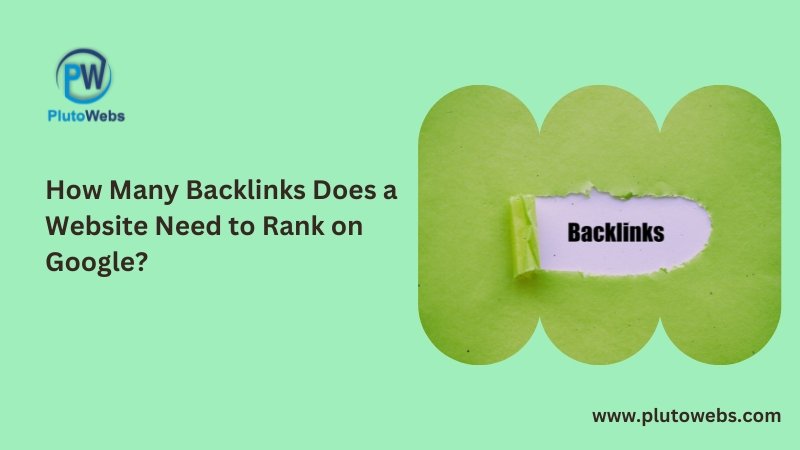
How many backlinks do I need to rank this website in Google is a common query that we receive. Most website owners know that backlinks are among Google’s most significant ranking factors. The problem is that creating backlinks takes a lot of time, money, and effort. So how do you determine how many backlinks to create? I’ll walk you through the three-step procedure for calculating how many links you’ll need to create in order to rank any page on your website for any keyword. How many Links must I Create? I wish there was a general response to this query. But in reality, there isn’t. Each and every keyword, market, and the search result is unique. It will take some time to determine how many backlinks you truly need, but happily, it’s much simpler than it sounds! Follow the steps mentioned below: Step 1: Determine which pages you need to build links to Not all pages are worthwhile for linking to. It’s unexpected, isn’t it? You should only concentrate on creating links to web pages with keywords that drive traffic and sales to your online store. Step 2: Calculate the gap in backlinks between you and your competitors Once you’ve narrowed down your list of target keywords, you may determine the “link gap.” The amount of backlinks required to land one of Google’s top three positions for a specific term is known as the link gap. In the end, here is where you want to be. Reflect on it Once you are aware of the required number of links, you can calculate: What the price will be. How much time it will take. What comes next? Create the links you require! Step 3: Begin developing your backlinks For many SEOs, link building is the most challenging aspect. Some people choose to outsource it (see approach #2), while others feel secure enough to handle it themselves (see way #1). Decide which method is ideal for you based on the demands of your own company. Method #1: Copy the top backlinks of your rivals My preferred link-building technique is backlink analysis. I always get the best results from it in the shortest length of time. The first thing you need to do is locate your main rivals in the search results. Simply conduct a fast Google search for your desired keyword to achieve this. Your main competitors are the top-ranked websites. Use Ahrefs to perform a thorough backlink analysis of the top 5 competing websites for your target term. You may determine their “best backlinks” by doing this (aka the backlinks you want to replicate). You now have all the information you require. The final step is to determine how they got the link. Is it a… Blog comment? Guest post? Forum post? You are trying to replicate whatever it was. Simply get in touch with the website and propose a guest post, for instance, if it was a guest post. Pretty basic, yes? Why this works so well is as follows: A website is more likely to link to you if it is previously linked to one of your competitors. You can obtain more links of good quality with much fewer work thanks to it. Method #2: Order the Links You Need To Rank Even with a great link-building strategy, seeing returns takes time and commitment. Due to this, a lot of business owners choose trustworthy link-building services to handle their link-building requirements. The advantage is that you can figure out how many links you’ll need to rank and then just go out and buy them. That is the easiest it gets, right? Why Is Backlink Building Important? Link building is now a crucial component of SEO. It will be difficult for you to rank for challenging keywords if you don’t build any high-quality links. Here are three compelling reasons to increase your backlink profile. You can Improve your Rankings with Backlinks Links are viewed by Google as endorsements (or votes). The more trusted websites that recommend you, the better you will rank in search results. That makes logical, no? Building links from other high authority sites is crucial. Your website receives a portion of that authority, which increases the likelihood that Google will give it a higher SERP ranking. You can Increase your Search Traffic with Backlinks What occurs when your website gains more traffic? You increase organic traffic, plain and simple. The best thing, though? This traffic has excellent targeting. You may be sure that you are receiving high-quality traffic when your website ranks for pertinent and valuable keywords. Backlinks can Help you Build More Credibility The level of authority indicates how likely you are to rank in Google. More authority equals a higher number. You must create more backlinks if you want to raise domain authority. In the SERPs, you can gain a competitive advantage in this way. When your website is an authority, it will be: harder for rivals to surpass you You may rank for more keywords more easily. You gain a benefit from link building that is difficult to lose. That is what gives it its great strength (and importance). Final Wrap Up You now have it. You now have the knowledge necessary to compute the precise number of backlinks required to rank any page for any keyword on Google. To consistently rank your high-value website pages for the relevant keywords, you simply need to follow the procedures outlined above.
Content Repurposing: The Modular Approach to Marketing
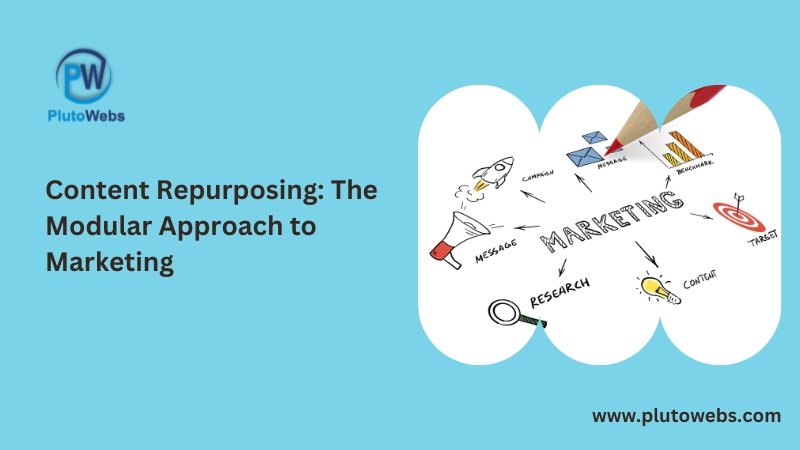
There are numerous different content formats and content marketing strategies. Everyone has their position. Each provides various advantages. Since it might be challenging to produce original content consistently, most marketers have mastered the art of content repurposing. For instance, you could take a lengthy eBook and divide it into four blog pieces, use it for a newsletter, and include an excerpt in an article that is submitted to a trade journal. Or you could use screen captures to replace the pictures in a speech-heavy film that you have transcribed into a blog article. A sort of repurposing that is more about personalising than simply getting additional mileage out of your content is to adapt it for different target audiences. Deconstructing your “reimagined” content into micro-content for social sharing is a typical next step. The majority of content repurposing techniques used by marketers involve breaking down larger chunks of material. This is made easier by using a modular strategy—so to speak, square pegs in square holes. But have you ever considered going the other way? You can locate important themes and other components within a template by using a modular approach to content marketing planning. Working with pre-defined key themes as building blocks ensures you’re covering what needs to be covered and makes reuse and personalisation that much easier (mapped to your content plan and consumer segments). It is similar to establishing a foundational content object that will be localised and tailored for various target audiences in various regions. In a typical case of content repurposing, you start with a collection of ideas in a bigger content object, divide that collection into smaller ideas, and then remix and reimagine those smaller ideas to produce other smaller content objects. I advise you to try it the other way around. Micro-content, such as statistics, quotes, advice, and examples shared on social media individually, could be combined with other smaller pieces of information into a larger content object, such as a blog post, report, eBook, or presentation with the correct planning. The simplest way to do this, in my opinion, would be to gather around 25 data on a subject of interest to your target audience and then plan to publish those numbers on social media over time. Repeat the process with 25 quotations and 25 concise, helpful pieces of advice. 75 social shares total over the time frame you choose to use as a layer for your social curation. Do daily interactions and shares based on what is going on right now. There are certain boundaries that someone is breaching by using a template, working with modular material, and scheduling social media posts. However, in practice, it is valuable to readers and achievable. Since it’s micro-content, you can also iterate and enhance with low risk. Why would it be logical for micro-content to develop into something bigger? Here are some of the causes: Regularly posting microcontent to your community is like sowing the idea that this is information relevant to how you want to be known. The preparation for the publication of the larger content objects involves drawing attention to and establishing credibility with that material. Micro-content is extremely shareable, and if you consistently provide informative tidbits, you’ll build the audience you need to make a bigger impact with the main content piece. You will receive data through publishing short-form content, particularly on social media. Views, shares, interactions, links, and basic demographics while using a URL-shortening service. The larger content object’s component pieces can then be built differently as a result of the information provided. The eBook or blog article only includes the tips that have received the most shares and interactions, while leaving out those that have received less. Curating micro-content is simple, offers your target audience important information, and can be integrated into a social content pipeline that builds up to a bigger content initiative. SEO-friendly content ranges from micro to large. Similar to optimising content for search visibility, variants on a topic are collected into a larger content item. Repurposing content in this way entails more than just compiling a collection of unrelated facts and advice. Microcontent would act as the modules or building parts of a broader narrative that would be interesting to the audience you are trying to reach. I believe that including micro-content in your social media curation strategy could lead to the development of new content creation options, particularly if you incorporate community involvement and crowdsourcing. It is a search engine and social media friendly, and you can develop a following for the thing you want to be recognised for before starting a significant content initiative. How do you use content repurposing for marketing? Have you ever attempted going backward and assembling a bigger content piece from smaller, previously published data points?
SEO vs Paid Search: A Primer
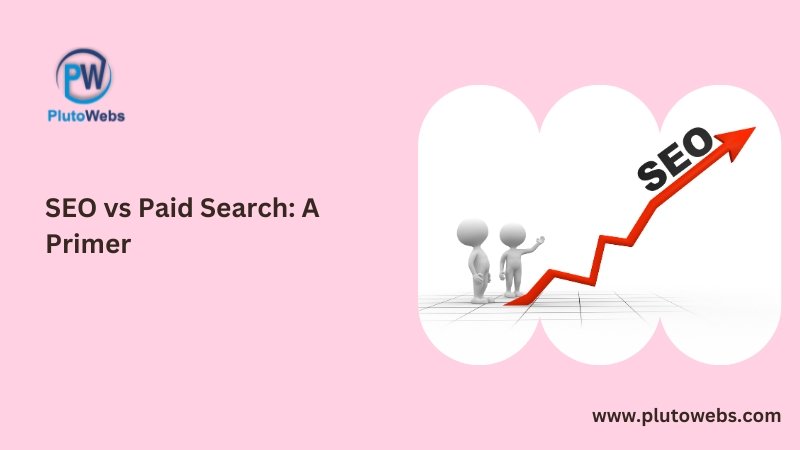
As both attempt to draw Google searchers and turn them into customers, SEO and Paid Search (also known as SEM) frequently battle for attention from traditional marketers. However, paid search and SEO serve different purposes in your digital marketing plan. SEO is a medium-to-long-term tactic that takes a lot of work but yields a great return on investment. SEM is a short- to a medium-term strategy with little work and a low return on investment. A thorough comprehension of these two channels is necessary to maximise their efficiency. Their distinctions are broken down in the table below. Attributes SEO Paid Search ROI Low initial ramp, high long-term Low yet offers quick returns Average Conversion Rate 2.4% 1.3% Cost Low initial startup, moderate long-term Medium to high, rising over time as a result of PPC inflation Type of Website Traffic Organic Inorganic Execution Challenge High; Needs a knowledgeable team to choose keywords, figure out search intent, produce content, and publish frequently. Low; anyone who uses marketing can put it up, but how successful it depends on the careful choice of keywords and prompt maintenance. Marketing Position Because of its high ROI, is well suited to serve as a key marketing investment; The developed content can be reused for different forms of marketing, including social media and email; Can be challenging to carry out internally given that Google promotes consistent posting and thought leadership that is search intent-focused. Excellent for generating leads quickly when short-term costs are more essential than long-term sales; An excellent auxiliary tool for keyword research or market expansion when used in conjunction with an SEO strategy. The benefits and drawbacks of each strategy are discussed here, along with a clear comparison of the conditions in which SEO and paid search are most effective. We also go over when it makes sense to combine the two methods. SEO: Benefits and Drawbacks Both art and science go into modern SEO; ranking is no longer achieved by merely writing and releasing content with keywords in the meta titles. You must comprehend your target audience, choose keywords that they frequently use, check them for transactional purposes, and—most importantly—produce fresh thought leadership material that addresses their search criteria. When done correctly, SEO thought leadership builds industry authority, increases trust with Google and customers, and produces quality leads for your sales staff. The following are the main benefits and drawbacks of SEO: Advantages of SEO: Among digital marketing platforms, the highest long-term ROI Greater conversion rates and shorter sales cycles due to greater consumer trust Produces content that can be used in your other marketing channels. Rewards marketing expertise and high-quality content over plain marketing spending. Disadvantages of SEO: A Hub & Spoke plan must be developed and implemented by a skilled team. Slower launch; it often takes 4-6 months to see the first benefits. Benefits and Drawbacks of Paid Search While sponsored search enables businesses to pay Google to have their page appear above the search results page for their chosen keywords, SEO relies on content quality to meet the variables that determine Google ranking. Visitors see these before the natural search results, but they get clicked on far less frequently. Paid search, as opposed to SEO, enables businesses to significantly improve their online traffic without having to spend money on content production and ongoing publication. However, when used as the main source of leads, it has a lower ROI than SEO and can rapidly get pricey. The following list of paid search’s benefits and drawbacks: Advantages of Paid Search Brings in site visits right away, producing leads quickly. Execution is relatively simple because positioning is based on ad spending rather than content quality. Changes to the Google algorithm have no impact on ads. Disadvantages of Paid Search Results only last as long as you keep paying for them. Long-term low ROI, rising costs as a result of PPC inflation Searchers do not trust them, which produces cooler leads. Extremely pricey in industries with high levels of competition where ad purchasing is common Combining SEO with Paid Search The most effective digital marketing efforts use both SEO and sponsored search; they are not mutually exclusive. Although SEO performs particularly well as a major marketing investment due to its high long-term value, many businesses struggle with the relatively long lead time. It’s also necessary to limit your keyword selection to no more than 4-6 emphasis regions in order to effectively implement a Hub & Spoke approach, leaving out potentially profitable keywords outside the main hubs. Paid search can help to close these gaps by generating leads quickly, serving as a testing ground for new keyword niches, and generating leads from queries that are unrelated to the primary objective of an SEO strategy. Ads are only shown to searchers who have previously visited your website using the retargeting tactic, which increases the possibility that they will come back and convert to leads. The searcher has already established a relationship with your website, avoiding the decreased trust of adverts while maintaining awareness of your goods and services. Outsourcing your Paid Search or SEO Activities It takes effort and dedication to manage marketing campaigns that can maximise the advantages of many platforms. As a result, a lot of businesses collaborate with a company that has a track record of delivering top-notch SEO services and achieving outcomes. Contact the trusted Digital Marketing Company if you’re interested in finding out more about how to execute SEO vs paid search.
SEO Techniques to Boost Organic Traffic & Rankings
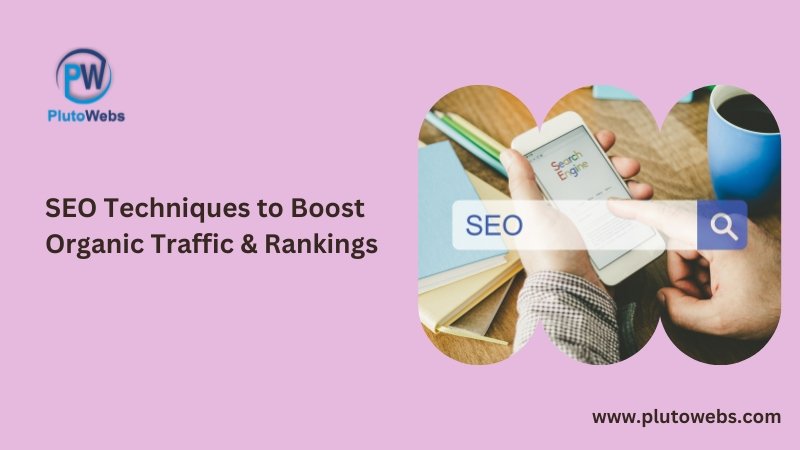
How to Make Your Organic SEO Efforts More Effective For the purpose of attracting traffic to your website, having your web pages rank highly in Google’s organic search results for significant keywords can be extremely beneficial. Here are some fundamental tactics to help you raise your organic search engine rankings, even if Google is continually changing its search engine algorithm. Establish a Keyword List It is unrealistic to believe that you will appear first in Google for every keyword associated with your sector. Securing high organic ranks for your most targeted keywords should be your objective. Both marketing and management will have to put in work on this activity. Make a list of keywords based on how customers could search for your goods and services, analyse the traffic and competitiveness for each phrase using well-known tools. The sweet spot is between high volume and low to medium competition keywords because they are simpler to rank for and have a significant potential for traffic. Additionally, by using AI-enabled conversation analytics solutions, you may discover how clients genuinely discuss your items. Target Words That Complement Your Intent The next step is to match your top keywords to search intent once you’ve determined what they are. Google states that there are three different categories of search intent: Informational: This type of search shows that the user is looking for advice, explanations, or how-to articles on a certain subject. “How to change a tyre” is an illustration of a query that is informational. Transactional: This type of search implies that the user wants to buy something. The purchase of new tyres is an illustration of a transactional inquiry. Navigational: This type of search shows that the user wants to go to a particular website or locate a particular seller. “Monro tyres” is an example of a navigational query. The trick is to figure out which purpose category each keyword belongs to and then provide content that meets their demands. For instance, if someone searched “how to change a tyre,” you would write a particular post with pictures demonstrating the procedure. On the other hand, if a user searched for “buy new tyres,” you would develop a product page with all the information they would need to make a purchase, including reviews, product details, an online shopping cart, and so on. Organic Rankings Will Favor Good Content Always keep in mind that generating high-quality content that piques attention, encourages readers to share it and link back to it, and compels them to do so is essential before you get into some of the more technical approaches to increase SEO ranking. Since Google significantly favours content virality in its ranking algorithm, good content has the best chance of going viral. Invest in good authors, quote credible sources (websites with high domain authorities) to support your material, and make sure your content complies with Google’s requirements for high-quality content. The Content should Include your Target Keyword and Keyword Variations Using a keyword is the greatest strategy to gain visibility for it. Since early placement might be an indication of relevance, you should include relevant keywords early in your page titles, headlines, and body text. Throughout your material, you should frequently use your focus keywords, but never at the price of strong writing. Google’s algorithm has gotten good at detecting “keyword stuffing” and penalises websites that overuse keywords in ways that make reading difficult. By reading your material aloud, you may check if your usage of keywords seems natural or odd, which can help you avoid being punished for “keyword stuffing.” You can fix this by substituting secondary keywords for the primary keyword that you want the site to rank for. Secondary keywords are crucial because they enable you to metaphorically cast a wider net into the sea of search engines. Secondary keywords ought to share the same intent as your primary keyword and be closely related to it. For instance, if we were to produce an article about “healthy dog treats,” we might also include secondary keywords like “low-calorie dog treats,” “organic dog treats,” “best dog treats for weight management,” etc. All of these keywords support the article’s main topic and keyword while also giving it more depth. Now that we have an optimised page that is helpful to that audience, we may be found when someone searches for any of those keywords. Optimise the Titles of your Pages An element of a web page is defined by its <title> HTML tag, which also serves as a brief summary of its contents. The top frame of the majority of web browsers for that page and in tabs displays the first line of hyperlinked text that Google displays in their organic search results. This is a vital component of on-page SEO, according to Google’s algorithm. Keep your page names to 70 characters or less because anything longer will be abbreviated when included in Google’s organic results. Your title should contain your critical keywords, preferably at the start. Consider adding your firm at the conclusion if you have extra room to do so to promote brand recognition. Mobile Site Optimization Google first declared that it would start utilising mobile-friendliness as a ranking factor in 2015. This resulted in the infamous “Mobilegeddon,” which saw businesses scurry to optimise their sites for mobile devices. Since then, Google has been gradually elevating the significance of mobile-friendliness in its results; in 2020, it made the switch to a mobile-first paradigm, elevating mobile performance above desktop performance in its algorithm. The following are some suggestions for mobile website optimisation: Use Google’s mobile-friendly tool to evaluate your website. Because fingers come in diverse sizes and might easily make mistakes, designs for touch are preferred. Make sure that your CTA buttons are mobile-friendly. Adapt your pop-ups for mobile platforms. Switch on accelerated mobile pages (AMP) Utilize caching Reduce the size of your photographs to speed up loading Understanding how users interact with your website on mobile will help you make the appropriate adjustments. It’s
Your 2023 guide to SEO reporting and tracking
Google has released an incredible amount of changes over the past year. Google is on a mission to eliminate black hat SEO techniques and enhance the SERPs by putting a focus on high-quality content, ideal page speeds, and mobile SEO. This effort has included updates like the Link Spam and Page Experience Updates. What does this imply for your SEO plan in 2023? Follow basic practices to keep your SEO foundation solid. If you want to prioritise making your site more visible in searches, we’ve put together a strategy that will last you through 2023 and keep your site performing well in search results for a long time: Some of such strategies are as follows:- Set goals and be aware of your numbers Spending time with your KPIs is essential when developing your SEO plan for the year. What indicators need to be taken into consideration in 2023? You can start with the following points when you re determining your SEO metrics: The quantity of individuals who arrive at your website via a search engine is known as overall organic traffic. Organic click-through rate (CTR) is the ratio of impressions to the number of times searchers click on links leading to your page in the SERPs. Where your pages show up in the SERPs for the keywords you rank for is known as keyword rankings. When you are satisfied with these figures, you should check your domain rating (DR) and page speed analytics. What SEO objectives ought to be set for 2023? Not every website needs the same SEO efforts. For the greatest outcomes, we advise that you strive for a solid and well-rounded balance between all of the SEO fundamentals. However, if you’re seeking figures to hit in 2023, take into account: Examine the MoM growth from the previous year and boost the percentage by 5%–10% MoM this year to improve your organic traffic by a specific percentage. Establishing a target for your overall keyword count or keyword position. Increasing your DR and receiving excellent PageSpeed Insights ratings. Additionally, this is always a fantastic strategy to raise your ranks. Keep in mind the metrics used by your rivals In the end, you want to outperform your rivals in DR. But part of the battle is understanding where to shoot. Compare your domain authority or DR against that of your competitors using the Bulk DA Checker. Examine the websites of your rivals and notice the keywords they rank for and whether any keyword gaps exist. Speed Check Your Website Google will continue to honour websites with quick loading times, reliable pages, and responsive design, as we saw in 2022. We predict that these factors will continue to have a significant impact on how Google ranks its results. It’s crucial to remember, though, that these also benefit your users, lower bounce rates, and can boost conversion rates. Therefore, do a site speed assessment and utilise the results to develop a strategy to address any issues that surface. Find your slowest pages first. Then concentrate your efforts on improving the elements and photos above the fold. Work through any remaining loading lags and content shift concerns before concluding. Continue to use social media Voice Search is still on the rise. What connection does that have to your social media accounts? Bing takes social signals into account when determining results, however Google has never publicly stated how much (if at all) influence social media has on PageRank. Additionally, Alexa smart speakers are where the majority of voice queries are made. And Alexa makes advantage of Bing’s search outcomes. This suggests that increasing your site’s Bing optimization a little bit will increase visitors to your site. Monitor Your SEO Development It’s crucial to evaluate your SEO strategy as you go along to determine what’s working and where you should change course. The GSC Insights tool from SearchAtlas makes it simple to compare the most insightful indicators, such as Keyword Rankings. Utilize these statistics to start developing a continuous plan for 2023. Do celebrate your victories often. Set SEO Objectives for 2024. As 2023 draws to a close, start planning new objectives for the following year. Keep up with algorithm updates, analyse how your target audience searches, and determine the strengths of your website. And by building on your accomplishments in 2024, you may face the new year with assurance. In a year or two, people will resort to your reports from today to help them tell the tale of the company’s SEO development. Because the knowledge you gather is valuable and will be useful in the future, so you can save it.
